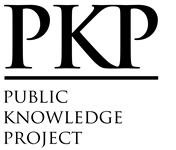Development Index of Village
Abstract
Development Index of Village (IPD) is part of a development plan Rural Development Information System (SIPDs) and Rural Area Development is based on Law No. 6 of 2014 on the village of Article 86, which is one of its verses says "Government and Local Government shall develop an information system of the village and the Development of rural areas". Development Index of Village (IPD) was built by the Village Potential Census data (Podes) issued by the Central Statistics Agency (BPS) conducted within a period of 3 (three) years. There are five (5) dimensions of rural development index (IPD) is the first basic service, the condition of infrastructure, third-accessibility / transport, public services fourth, and fifth Implementation of government. IPD village classifies into Villages, Village Developing and Village Self. Based on the research results Hidayati (2015) obtained the data that the proportion of the population living below the national poverty line in Tuban regency suffered progress backwards with PHI value of - 0.293, the ratio of depth of poverty in the district Tuban also retreated with PHI value of - 0.141. Similarly, the ratio of employment to population aged 15 years and over in Tuban experiencing progress backwards with PHI value of - 0.063. While Indicator of education in almost all districts in Tuban, many have not reached the target or targets were heading except for indicators dropout rate (DO) of children aged 7-15 years (2.2.z), figure Attrition SD (2.f) and figure Dropout SMP (2.g). These facts are an indication that the achievement of development in Tuban Regency still needs a big effort to be improved. Therefore, in order to improve the development strategy in Tuban regency proper and appropriate program / target location, it is necessary to conduct a study to first identify the achievement of Village Development Index in each Village and District based on 5 Dimension of IPD and conducted Clusterization of Village Development per District in Tuban Regency based IPD (Podes 2014). In order to achieve these objectives are used IPD scorecard and IPD maping techniques. And the result is the majority in almost all districts in Tuban Regency IPD performance related to the dimensions of economic infrastructure, communication infrastructure and information and public services in the field of sports is still far from the target Minimum Service Standards Tuban. IPD achievements are related to the dimensions of energy infrastructure, health and sanitation infrastructure and transportation accessibility, public service in the field of public health and self-reliance in governance shows that almost all districts in Tuban Regency have reached the Minimum Service Standards target. The dimension of governance is a dimension whose level of development achievement does not have a red scorecard for all sub-districts. The village with the highest IPD achievement in Tuban Regency is Sukosari Village, Soko District whereas the lowest IPD achievement is Ngrejeng village, Grabagan sub-district. The percentage of classification of village status in Tuban Regency covers 2.57% of the villages, 90.68% for developing villages and independent villages as much as 6.75%. Based on Cluster Mapping of Village Development Index, Grabagan District is a sub-district with the Lowest Village Development Index level, especially in terms of its infrastructure development dimension. Next Kerek District and District Kenduruan as the second lowest cluster. While the District Jatirogo, Bancar, Tambakboyo, Bangilan, Senori, Parengan, Soko and Semanding. As a sub-district with the highest cluster that has a Village Development Index above 64.09 is District Jenu, Merakurak, Tuban, Cross, Widang, Plumpang, Rengel, Montong and Singgahan
Full Text:
PDFDOI: https://doi.org/10.5296/jsss.v7i1.15349
Refbacks
- There are currently no refbacks.
Copyright (c) 2019 Roziana Ainul Hidayati

This work is licensed under a Creative Commons Attribution 4.0 International License.
Journal of Social Science Studies ISSN 2329-9150
Copyright © Macrothink Institute
To make sure that you can receive messages from us, please add the 'macrothink.org' domain to your e-mail 'safe list'. If you do not receive e-mail in your 'inbox', check your 'bulk mail' or 'junk mail' folders. If you have any questions, please contact: jsss@macrothink.org
-----------------------------------------------------------------------------
